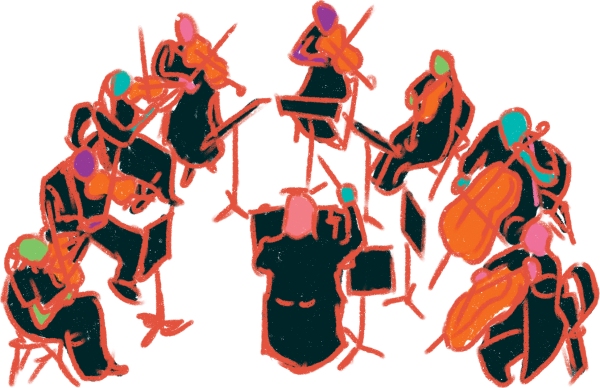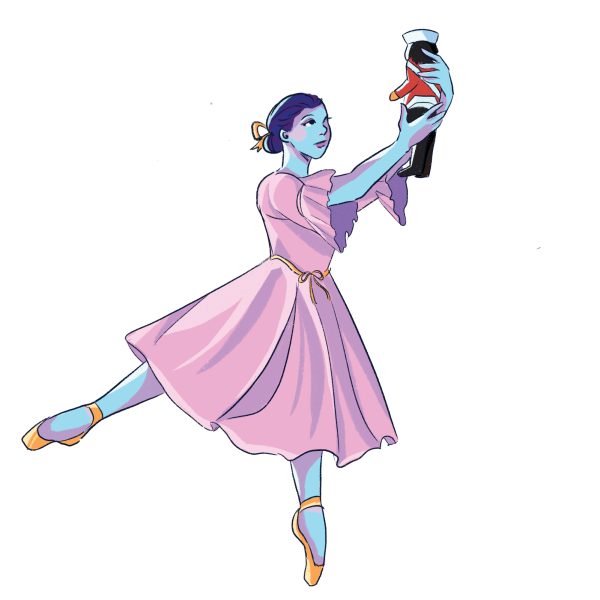“Not Alone” Exhibit Addresses Human Trafficking
February 24, 2021
The Bob Bullock Museum is using its new exhibit, “Not Alone,” to educate the public about human trafficking and provide informative resources. The temporary exhibit features artifacts and stories to help bring viewers closer to the issue and combat misinformation.
Human trafficking is using force, coercion or fraud to sell someone for sex or labor. President Barack Obama once called the practice “modern day slavery,” and Texas ranks tenth in the nation for the highest rate of human trafficking.
Exhibit curator Angie Glasker said the museum was inspired by locally-developed campaigns centered on education and prevention of human trafficking. Her idea first came to mind a few years ago.
“We’re really inspired by the Office of the Governor and their child trafficking group within that office, as well as a recent campaign called ‘Be the One’ that came out of the attorney general’s office,” Glasker said. “It was in 2018 that we started thinking about doing human trafficking as a topic for an exhibit.”
The exhibit focuses on educating and spreading awareness about human trafficking while also giving people knowledge on prevention strategies. Glasker said she hopes that people will leave with more knowledge and a deeper understanding of the subject.
“We’re really trying to get people to have a baseline knowledge of what human trafficking is because it is something that I think is misunderstood, or a lot of people, I think, confuse trafficking with human smuggling, and that’s not the case,” Glasker said. “It’s really giving people that baseline knowledge. An exhibit like this also allows us to humanize the problem.”
In the exhibit, there are artifacts that help communicate survivors’ experiences, as well as donated artifacts from other anti-human trafficking organizations. While some of them are everyday items, the significance behind them is much deeper.
“The exhibit is actually a little different than a lot of our exhibits in that it’s not as artifact-heavy as other temporary exhibits,” Glasker said. “We do have some artifacts. The majority of those artifacts come from either survivors that we talked to and helped us with this exhibit or from other organizational partners. For example, we have this backpack kit that Love 146 in Houston distributes to people who are at risk, and the kit includes things that someone who’s vulnerable to trafficking or somebody who is being trafficked would find useful or would help them to better cope with their situation; so things like hygiene products, there’s a journal, a rain poncho, that sort of thing.”
The museum partnered with survivors of human trafficking to share their stories. Tori McKinley is one of those survivors, and she said the exhibit is a very effective way to raise awareness.
“I never in my life thought that I would be in a museum,” McKinley said. “A lot of kids do go to museums, and it’s not an explicit, derogatory or shameful way to talk about trafficking. A lot of people get scared by it because it has the word ‘sex’ in it, [but] it’s not about sex. It’s about violence against women and men and how to protect yourself, so I think it’s a good way to reach children in a non-threatening way…I think it’s a good start, I think it’s one of many ways and a very creative way [to] teach about sex trafficking.”
Katherine McGibbon became an advocate against human trafficking after overcoming it herself and realizing the lack of awareness of the issue. She explained that the misinformation and absence of education surrounding human trafficking contribute to the problem.
“I’m an overcomer myself, and I saw that there was a huge need just for awareness and education,” McGibbon said. “And I realized that a lot of people did not know what trafficking was or they do not know what trafficking is, and a lot of survivors and victims possibly don’t even know either, so they don’t know if they can self-identify…By getting the word out there, they can feel like they’re not alone.”
The Polaris Project, the organization that operates the National Human Trafficking Hotline, worked on 11,500 cases that were reported to the hotline in 2019. However, the organization said human trafficking cases are usually underreported despite the large extent to which it occurs, according to McGibbon.
“It’s not just a foreign problem — it’s a domestic problem as well,” McGibbon said. “It’s very, very prevalent in the United States. And it’s in our backyards, it’s in our schools, our churches, our neighborhoods, and our communities. It’s hidden in plain sight. That’s what makes it so dangerous.”
McKinley agrees that there is a lack of awareness. She said that people might not be aware because it can be hard to hear and talk about, and that governments can often shy away from talking about the topic.
“When you are searching for a place to live, you’re searching for a good area that you’re going to feel safe and protected in, and so it’s hard to believe that an area that you spent time researching may have some negative things going on in it, or some bad things being done or just bad people,”McKinley said. “The cities that we live in, they don’t want people to know that something like that is going on in their neighborhood because then they won’t move there and be involved in the economy…It’s really difficult for a lot of people to hear, they just don’t want to hear about it because they can’t. For some people, it’s just such a tough issue that they can’t handle hearing about it and they don’t want to know.”
The exhibit is open until May 30, 2021. The Bob Bullock Museum webpage has pictures and information about the exhibit for anyone who isn’t comfortable going in-person. The National Human Trafficking Hotline is 888-373-7888, or text “HELP” or “INFO” to 233733.








